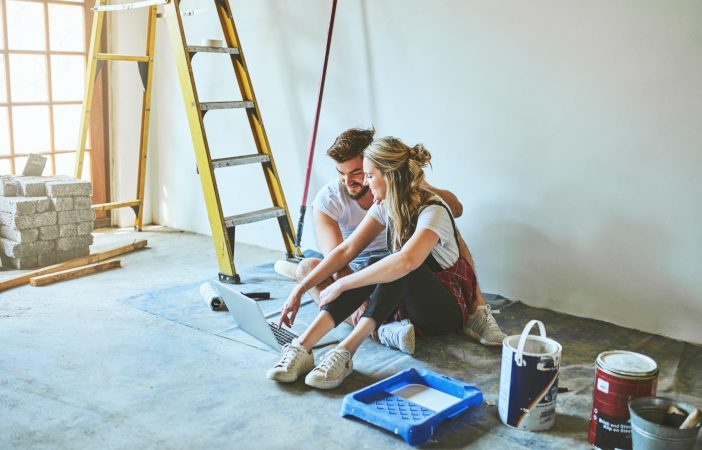There’s certainly no shortage of inspiration out there for DIY-ers. Whether it’s Instagram, Pinterest, even hardware stores themselves have endless ideas for turning awkward corners into coffee bars, installing dog-friendly showers, and even tackling full-on bathroom renovations and kitchen makeovers. What there does seem to be a shortage of, however, is solid safety advice.
Experts advise that if you’re planning to take on anything more ambitious than raking up leaves, there are some steps you should take to minimise health and safety risks. Here are the five safety tips for anyone planning a home DIY project.
PriceCheck tip: Before you tackle your latest DIY project, find the best deals on powertools on PriceCheck.

1. It’s all about planning
One of the reasons that professionals can work so efficiently is that they research the work to be done, and they buy the tools and materials they’ll need in advance. Anyone who’s ever tried to unscrew something using a butter knife instead of an actual screwdriver knows the frustration that comes with not having the right tools for the job.
Another good example is painting: The right-size paint brush or roller can save hours of manual labour and help to prevent runs and streaks. Trevor Brewer, Director of Solenco, air treatment and lifestyle technology specialists offers another important tip you may not have considered. Brewer says that, while it’s essential to have good ventilation when painting indoors, investing in a good dehumidifier will also drastically reduce the time it takes the paint to dry, delivering two important benefits: A smoother, streak-free finish and less inhalation of fumes.

2. Safety first (and last)
It’s common sense that electrical jobs are dangerous and require certain safety precautions. But it’s not only projects involving power that have the potential to be very dangerous. There are also invisible health hazards inherent to DIY work: Think paint chemicals, fine matter from building materials, and dust particles. These often fly under the radar, but can result in allergy flare-ups, asthma and other more serious respiratory conditions. Apart from using the appropriate personal protective gear for the job you’re doing, getting an air purifier will keep you safer by filtering out air-borne hazards as you work.
3. Cheap really is nasty
There’s no point in having the right tools and grand plans if you buy cheap building materials and tools. As part of your planning, keep an eye out for specials and sales. Budget to buy top-class materials over a few months if you need to, but don’t fall into the trap of buying knock-offs because you need them now. Chances are, if you DIY with doubtful materials, you’ll end up doubling your efforts and doing the same job twice (which will cost you more anyway).

PriceCheck tip: To add to your kitchen’s new look, you can find the best deals on kitchen appliances, including coffee machines and air fryers on PriceCheck.
4. Measure twice, cut once
Talking about doubling up on your efforts. The only time this is a good thing is when you’re measuring. Take your time and do it two or three times, whether it’s measuring the space to work out the materials you’ll need, or measuring the materials before you start cutting and drilling. In the long run, it’ll save you time and money.
5. Work in the right space
Are you planning to paint shelves in the window-less pantry, or glue glass panels together in the stuffy green-house? Think carefully! Will the paint dry before it streaks and bubbles? Is there sufficient ventilation to offset glue fumes? WHERE you’re DIY-ing is as important as WHAT you’re DIY-ing.
The moisture levels in a workspace can work against you if you don’t have a dehumidifier working alongside you. A dehumidifier will remove any excess moisture from the air, allowing your work to dry and cure efficiently for the best product finish and longevity. If, however, you haven’t properly considered where you’re working and decide to start building bedroom cupboards on the driveway, only to find out that you can’t fit them through the bedroom door. That’s on you.



